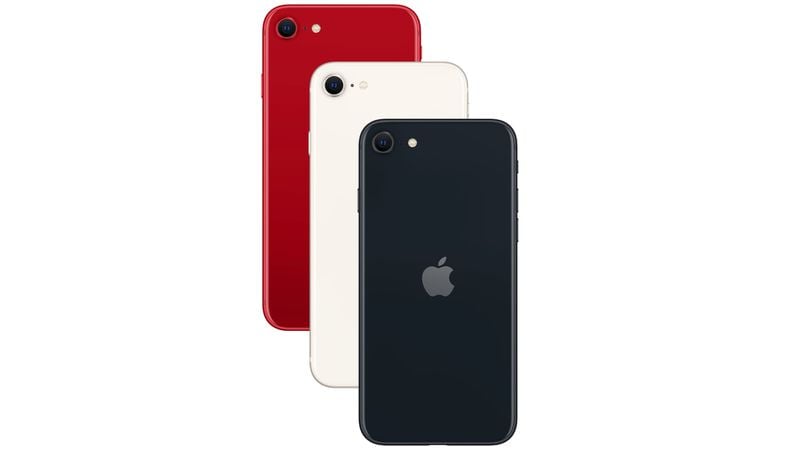
iPhone SE Discontinued
Apple has retired and discontinued the iPhone SE, and it is no longer for sale. The iPhone SE has been replaced by the iPhone 16e, a $599 iPhone that is being sold alongside the iPhone 16, iPhone 16 Plus, iPhone 16 Pro, and iPhone 16 Pro Max.
The iPhone 16e features a 6.1-inch OLED display with Face ID, a single-lens 48-megapixel rear camera, a USB-C port, and an A18 chip that supports Apple Intelligence. The transition from iPhone SE to iPhone 16e marks the end of several prior-generation iPhone features, such as Touch ID, a smaller iPhone form factor, LCD displays, and Lightning ports.
More information on the iPhone 16e can be found in the iPhone 16e roundup.
The 2022 iPhone SE
Contents
The iPhone SE is Apple's lowest-priced iPhone, meant to be an affordable alternative to the flagship devices. It has been around since 2016, and in 2022, Apple introduced the third-generation version, with an updated $429 price point, improved A-series chip, and 5G connectivity.
At $429, the 2022 iPhone SE is $30 more expensive than the prior-generation version, but it is still Apple's most affordable iPhone with a modern A15 chip and 5G. There have been no design changes to the iPhone SE, and the 2022 model looks identical to the 2020 model, which was in turn based on the iPhone 8.
The iPhone SE features a 4.7-inch Retina HD LCD display, with True Tone to match the ambient lighting in a room, Wide color, Dolby Vision, and HDR10.
Available in Starlight, Midnight, and (PRODUCT)RED, the iPhone SE is built with a glass front and back with a color-matched aluminum band. Wireless charging is supported and it features IP67 water and dust resistance so it can hold up to splashes, accidental spills, and even brief submersions in water. It also features more durable front and back glass, making it less prone to breakage than the second-generation iPhone SE.
As it is modeled after the iPhone 8 and prior iPhone SE, the 2022 iPhone SE continues to feature thick top and bottom display bezels and is the sole remaining iPhone model to do so. The top bezel houses the 7-megapixel ƒ/2.2 front-facing camera and microphone while the bottom bezel includes a Touch ID Home button for fingerprint-based biometric authentication.
The iPhone SE is Apple's only iPhone that comes with a Touch ID Home button, as all other iPhones now feature Face ID. Touch ID works similarly to Face ID as far as authentication, but uses a fingerprint scan instead of a facial scan for Apple Pay purchases, password replacement, and more. Like other iPhones, it uses Haptic Touch for Quick Actions and contextual menus.
There's a single-lens 12-megapixel rear camera in the iPhone SE with an ƒ/1.8 aperture, optical image stabilization, and support for Portrait Mode and Portrait Lighting. The iPhone SE does not have Night Mode, but there is Wide color support, and more, plus an LED True Tone flash with Slow Sync capabilities. The 2022 model gains Smart HDR 4 for improved contrast and skin tones, Deep Fusion for better textures, and Photographic Styles for a custom look for all your photos.
The iPhone SE's camera can record 4K video at up to 60 frames per second with optical image stabilization and support for slo-mo video and time-lapse video. The front-facing camera supports Portrait Mode as well using the image signal processor and Neural Engine of the A15 Bionic.
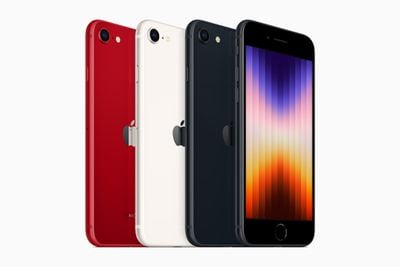
In terms of performance, the iPhone SE is on par with the iPhone 13 because it uses the same A15 Bionic chip as Apple's flagship iPhones. The A15 features a 6-core CPU, 4-core GPU, and 16-core Neural Engine. According to Apple, the A15 offers up to 1.2x faster graphics performance compared to the A13 in the prior model, plus it has 4GB RAM, up from 3GB in the prior model.
Along with the new A15 chip, the other major upgrade to the iPhone SE is 5G connectivity. The iPhone SE is now compatible with 5G networks, but unlike the flagship iPhone models, it does not support the fastest mmWave 5G networks. Instead, it is limited to the slower but more widespread Sub-6GHz 5G networks.
When it comes to battery life, the iPhone SE has better battery performance than the prior model because of the A15 chip. The battery lasts for 15 hours when watching videos, 10 hours when streaming videos, and 50 hours when listening to audio. It is capable of fast charging and can charge to 50 percent in 30 minutes when using a 20W power adapter or higher. It does support Qi wireless charging but there is no MagSafe compatibility.
There's no U1 chip inside the iPhone SE, but it does feature WiFi 6 support, which is the latest and fastest WiFi protocol, along with Bluetooth 5. It also has NFC with reader mode and supports Express Mode transit cards with a power reserve feature that allows cards to be accessible even when the battery is dead.
The base iPhone SE is available with 64GB storage at the $429 price point, but 128GB is available for $479 and and 256GB of storage is available for $579.
Preorders for the 2022 iPhone SE began on Friday, March 11, with the device officially launching on Friday, March 18.
Note: See an error in this roundup or want to offer feedback? Send us an email here.
How to Buy
The iPhone SE can be purchased from Apple's retail stores, partner stores, and the online Apple Store. It is priced starting at $429, with 64, 128, and 256GB storage options available.
As of December 2024, Apple is no longer selling the iPhone SE in the European Union.
Design
The third-generation version of the iPhone SE continues to look like the second-generation model from 2020, which in turn was identical to the 2017 iPhone 8. The iPhone SE features a 4.7-inch display with thick bezels at the top and bottom of the device.
The top bezel features a cutout for the front-facing camera, speaker, and accompanying sensors, and at the bottom of the device, there's a Touch ID Home button covered in sapphire crystal.
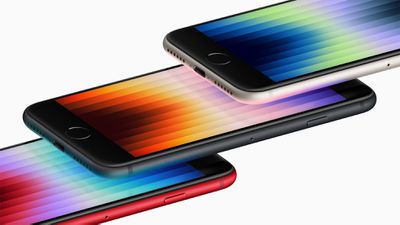
The iPhone SE has an all-glass body that uses a seven-layer ink process to add color to the glass, resulting in a rich depth of color. The glass display and the glass body are held together by an aluminum band that matches the color of each iPhone for a seamless look, and there are small antenna lines.
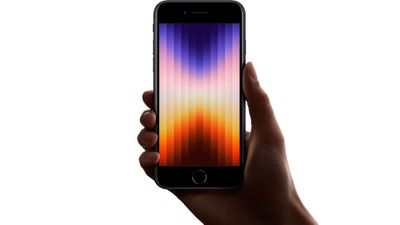
Apple says that the 2022 iPhone SE is using a more durable glass material that makes it more resistant to drops and scratches. It is equipped with the "toughest glass in a smartphone." The back of the iPhone SE houses a single-lens rear camera, a microphone, and an LED flash.
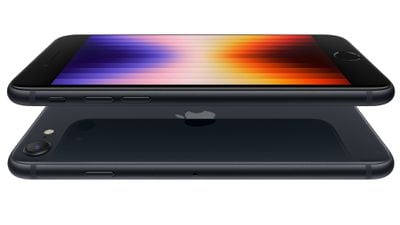
On the left side of the iPhone SE, there are a mute switch and volume buttons, while the right side features the sleep/wake button. The bottom includes a Lightning port and speaker holes, and like prior iPhones, there is no headphone jack so Bluetooth or Lightning headphones are required.
The iPhone SE measures 138.4mm tall by 67.3mm wide, it's 7.3mm thick, and it weighs 5.09 ounces, which is just a tad lighter than the prior model. While it has the smallest display of any current iPhone, the iPhone 13 mini is physically smaller. Because the iPhone SE shares a design with the iPhone 8, cases designed for the iPhone 8 work with the iPhone SE, as do cases for the 2020 iPhone SE model.
Color Options
The iPhone SE is available in starlight (a white color), midnight (a very dark blue), and a (PRODUCT)RED option that features a bright red glass-backed shell. All three colors feature black front panels, including the starlight version.
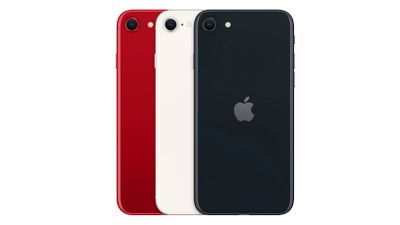
Water and Dust Resistance
The iPhone SE features an IP67 dust and water resistance rating, which means it is entirely dust proof and able to withstand one meter of water (3.3 feet) for up to 30 minutes.
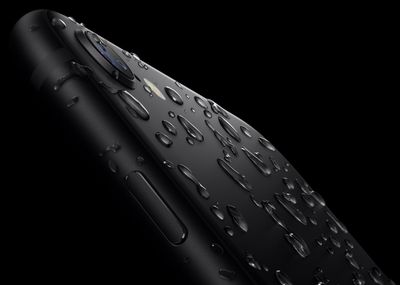
The iPhone SE holds up to splashes, rain, and brief accidental water exposure, but intentional water exposure should continue to be avoided. Apple warns that water and dust resistance are not permanent conditions and could decrease as a result of normal wear, plus Apple's warranty does not cover any kind of water damage.
Touch ID
Apple's flagship iPhones feature an all-glass design with Face ID, but to keep costs low, the iPhone SE continues to offer a Home button with a Touch ID fingerprint sensor. It is the only iPhone that uses Touch ID, as all other iPhones use Face ID.
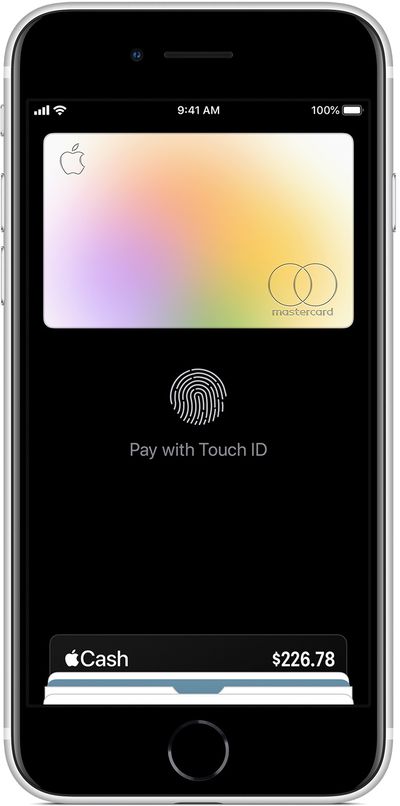
The Touch ID Home button is covered with a durable sapphire crystal that protects the Touch ID sensor and a steel ring that detects a user's fingerprint. Touch ID is used for unlocking the iPhone, filling in passwords with iCloud Keychain, confirming App Store purchases, opening passcode-protected apps, and confirming Apple Pay transactions.
Display
The iPhone SE uses a 4.7-inch "Retina HD" LCD display with a resolution of 1334 by 750 with 326 pixels per inch and a 1400:1 contrast ratio. Apple has not improved this display since the iPhone 8, and the iPhone SE is the only iPhone that uses an LCD display. Apple has upgraded other iPhones to OLED.
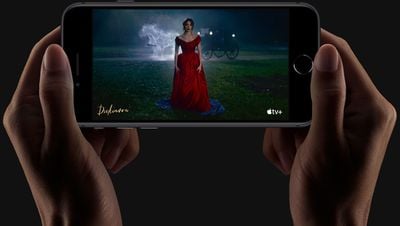
It features multi-touch capabilities, P3 wide color support for rich, true-to-life colors, a fingerprint resistant oleophobic coating, and 625 nits max brightness.
True Tone
The iPhone SE supports True Tone, a feature that has been included in iPad and iPhone models for several years now.
True Tone takes advantage of the ambient light sensor to detect the lighting in a room, adjusting the color temperature and intensity to match the light for a more natural, paper-like viewing experience that cuts down on eye strain.
Haptic Touch
The iPhone SE offers the same Haptic Touch functionality available to the rest of the iPhone lineup.
Haptic Touch works similarly to 3D Touch and offers a lot of the same functionality, but it is not pressure-sensitive and does not support multiple functions for each press. It is instead better described as a long press or a press-and-hold gesture with haptic feedback.
Haptic Touch can be used throughout the operating system for many tasks like accessing Quick Actions on the Home screen, previewing links in Safari, activating the flash on the Lock screen, accessing extra features in Control Center, and more.
A15 Bionic Chip
The iPhone SE is equipped with the same A15 Bionic chip that's included in the iPhone 13 models, with a 6-core CPU that has two performance and four efficiency cores, a 4-core GPU, and a 16-core Neural Engine.

According to Apple, the A15 chip offers up to 1.2x faster graphics performance than the prior-generation iPhone SE.
Storage Space
The iPhone SE is available in 64GB, 128GB, and 256GB storage options.
RAM
The 2022 iPhone SE has 4GB RAM, up from 3GB in the prior version.
Camera
To keep costs low, the iPhone SE features a single-lens rear camera, but it does adopt some technology from the iPhone 13 and 13 Pro thanks to the image signal processor in the A15 Bionic chip.
The 12-megapixel wide-angle camera features an ƒ/1.8 aperture with optical image stabilization, wide color capture, Deep Fusion for improved texture, and next-generation Smart HDR 4 for improved highlights and shadow details.
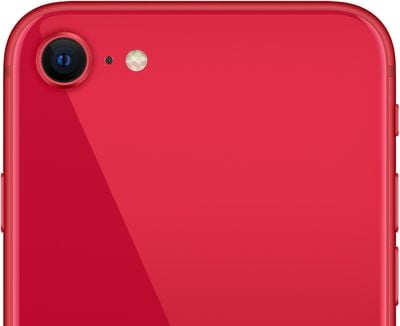
No Night Mode
The iPhone SE does not have the same capabilities as more expensive iPhones with multiple lenses, so there is no support for Night Mode or optical zoom on the iPhone SE.
Portrait Mode and Portrait Lighting
Though there aren't two cameras, the iPhone SE does support Portrait Mode, Portrait Lighting, and Depth Control using the image signal processor and the Neural Engine for computational photography. The second-generation iPhone SE was the first iPhone to use a purely software solution to enable Portrait Mode.
Portrait Mode allows for artful blurring of the background in an image when taking a portrait photo of a person, pet, or object, while Portrait Lighting allows six studio-quality lighting effects to be added to images. Depth Control allows the amount of blur in an image captured in Portrait Mode to be tuned for the best possible blend of blurring and detail.
Video Capabilities
The iPhone SE shoots 4K video at up to 60 frames per second, with 24 and 30 frames also available options alongside 1080 and 720p shooting modes.
Extended dynamic range support is available for video up to 30 frames per second, and optical image stabilization is available.
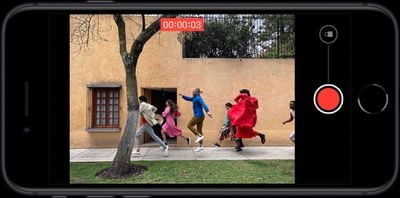
QuickTake video, a feature first introduced in Apple's 2019 flagship iPhones, is included, allowing users to capture quick videos by holding down on the camera button when in photo mode. Existing modes like slo-mo (1080p at 120 or 240 fps) and time-lapse are also available on the iPhone SE.
Front-Facing Camera
The 7-megapixel front-facing camera features an ƒ/2.2 aperture with Portrait mode and Depth Control support despite the lack of a TrueDepth camera system. To enable this feature, Apple uses machine learning and monocular depth estimation.
The front-facing camera supports QuickTake, and it was the first iPhone front-facing camera to offer the feature. 1080p HD video can be recorded at 30 frames per second, and other features include Retina Flash, auto image stabilization, Burst Mode, auto HDR, and wide color capture.
Battery Life
The iPhone SE's battery offers up to 15 hours of video playback, two hours longer than the prior iPhone SE.
It lasts for up to 10 hours when streaming videos, and up to 50 hours when playing audio.
Fast Charging
The iPhone SE supports fast charging, which means it can be charged to 50 percent battery life in just 30 minutes. Fast charging requires a USB-C power adapter that offers at least 20 watts, which includes 29/30W adapters from Apple (priced at $49).
The USB-C power adapter needed for fast charging must be purchased separately because the iPhone SE ships with only a USB-C to Lightning cable. It originally shipped with an USB-A to Lightning cable and a 5W power adapter, but Apple removed the power adapter from the box across its lineup in an environmental and cost-saving move.
Wireless Charging
The iPhone SE has a glass body with a built-in wireless charging coil to support Qi-based wireless charging. It is compatible with any 5W or 7.5W Qi-based wireless charging accessory.
5G Connectivity
The iPhone SE supports 5G, and it is Apple's most affordable 5G iPhone. Unlike Apple's more expensive iPhone options, it does not support the fastest mmWave 5G networks. Instead, it is limited to the slower but more widespread Sub-6GHz networks.
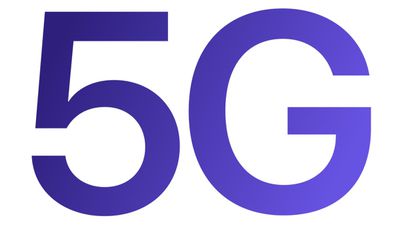
mmWave 5G networks are the fastest 5G networks, but mmWave is short-range and can be obscured by buildings, trees, and other obstacles, so its use is limited to major cities and urban areas along with venues like concerts, airports, and other places where a lot of people congregate.
Sub-6GHz 5G is much more widely available and available in urban, suburban, and rural areas across the United States and other countries. For the most part, when you use a 5G network, you'll be using Sub-6GHz 5G, and at this point in time, mmWave connectivity won't be missed because of its limited availability.
The iPhone SE is compatible with the following 5G bands: 1, n2, n3, n5, n7, n8, n12, n20, n25, n28, n29, n30, n38, n40, n41, n48, n66, n71, n77, n78, n79.
LTE connectivity is also available and the iPad mini is compatible with FDD-LTE bands 1, 2, 3, 4, 5, 7, 8, 11, 12, 13, 14, 17, 18, 19, 20, 21, 25, 26, 28, 29, 30, 32, 66, and 71 along with TD-LTE bands 34, 38, 39, 40, 41, 42, 46, and 48.
Dual-SIM Support
Dual-SIM support, which allows two phone numbers to be used at one time, is included in the iPhone SE. Dual-SIM functionality is enabled through the inclusion of one physical nano-SIM slot and an eSIM.
The eSIM feature is available in many countries around the world, and Apple has a full list of carriers that support eSIM on its website.
Bluetooth and WiFi
The iPhone SE supports Bluetooth 5.0, which offers longer range, faster speeds, larger broadcast message capacity, and better interoperability with other wireless technologies compared to Bluetooth 4.2.
It also supports WiFi 6 with 2x2 MIMO, aka 802.11ax WiFi. WiFi 6 is the latest WiFi protocol and it lets you download up to 38 percent faster than WiFi 5 (aka 802.11ac).
GPS and NFC
Support for GPS, GLONASS, Galileo, and QZSS location services is included in the iPhone SE.
NFC with reader mode is included, and there's a background tag feature that allows the iPhone models to scan NFC tags without the need to open an app first. The iPhone SE also supports Express Mode with power reserve, which means it can be used in lieu of a transit card for public transit and continues to function even if the battery is dead.

